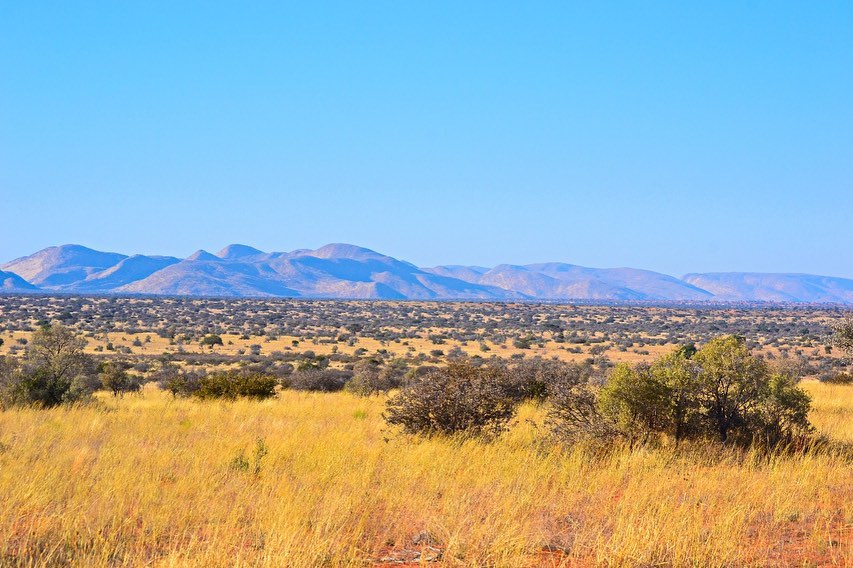Dear Partners in Tourism,
Covid19 has given us at Royal African Discoveries a bit more time to explore some of the remote parts of the country. Pieter & I recently did a canoe trip on the Orange River close to the town of Pofadder. The river forms the border between South Africa and Namibia. Stunning desert scenery in one of the most remote parts of the country – harsh, stark, bone dry, sand & rock with the occasional Quiver tree – yet breathtakingly beautiful. Naturally we were properly roughing it on this trip – but was fortunate enough to experience a bit of luxury on the journey back!
Equally remote and also located in the Northern Cape Province close to the town of Hotazel (yes, indeed pronounced ‘hot as hell’) is the Tswalu Kalahari Reserve. It took us nearly 6 hours to drive from Pofadder – an indication of the vastness and size of this part of the country. Naturally clients would fly into Tswalu’s airstrip from either JNB or CPT considering the remoteness of its location.
Tswalu lies in the Kalahari region and covers an area of approximately 120,000 hectares (nearly twice the size of Singapore) and is the largest private reserve in the country. The Kalahari is a unique arid biosphere that straddles parts of Namibia, Botswana and South Africa.
The safari experience at Tswalu is thus also unique and different to the traditional safari areas of the Kruger, Madikwe, Northern KwaZulu-Natal or Eastern Cape. Oryx, Sable, Roan Antelope, Springbok, Brown Hyena and Meerkat are prolific in the Kalahari – not in the rest of the country. The population density of animals are naturally low due to the arid nature of this region. This would thus be a safari experience complimentary to the traditional safari in the rest of the country.
You might ask, why then visit Tswalu? I could rhetorically ask why visit Svalbard in Norway or Patagonia in Chile in response….It is one of those truly breathtakingly & most beautiful areas. Expansive vistas that last forever, crisp blue skies devoid of pollution (just imagine the skyline at night – you will never see more stars in your life!), a colour palate of rust-red dunes, ivory-pale grasslands splattered with the odd muted-green shrub and brutally rocky mountains.
The Kalahari might be arid & dry but it will nourish the mind and soul.
Add to that top quality accommodation, warm & friendly service and wholesome, lip-smacking dining and you have Tswalu. Tswalu offers accommodation at either Motse Lodge or at Tarkuni Lodge (an exclusive use option). We stayed at Motse that comprises of 5 standard suites and 3 two-bedroom family units.
Exceptional care has gone into the design to make the Kalahari shine without giving an inch on quality, style & craft at the lodge. Tones of grey & ivory mix with the rich textures of wood, copper, polished concrete, hide, stone and thatch. Delicate wisps of muted-green and rust-orange add to the ode to the Kalahari.
We only stayed for 2 nights (with a late afternoon arrival on the first day) and effectively only had 3 safari drives. We however did a short drive on arrival dedicated to a magical sunset – stunning! [Facebook photos of the sunset]
We were exceptionally blessed with magnificent sightings on our safaris – a Wild Dog kill and also Cheetah sighting on first morning, Meerkats in the afternoon and Lions (with cubs!) on last morning. Lots of Oryx, Sable, Roan, Springbok and other plains game too. We would generally recommend at least a 3-night stay for most guests to be able to enjoy and savour the complete experience.
The latest experience included in the Tswalu offering definitely lends it to 3-night stays. Tswalu guests have the opportunity to dine at Restaurant Klein Jan on one of the evenings of their stay. Acclaimed South African born chef Jan Hendrik van der Westhuizen who operates a Michelin star restaurant called JAN in Nice, France collaborated with Tswalu to create the dining experience of Klein Jan (translated as small Jan).
The Klein Jan (www.janonline.com) experience is a symphony of culinary delights, the evolving stories of South African cuisine, a visual experience of fresh, locally sourced and prepared produce intertwined with Jan Hendrik’s journey and the influence of the Kalahari on this creation. A never-ending series of crescendos in awe, surprise, astonishment and delight will not only astound your taste buds but also touch your heart and soul. Klein Jan is most certainly not just another restaurant. Foodies might weep in culinary ecstasy.
Dinner at Klein Jan is reserved exclusively for Tswalu guests. Although the tasting menu is focused on a specific South African story, dietary requirements will be taken into account on prior arrangement to adjust your culinary fairy tale accordingly.
Traditionally Tswalu featured in itineraries of second time and repeat visitors to South Africa. In the Covid19 (and post-Covid19) era and in some of our source markets where the culinary aspect is integral to the total experience we would recommend the consideration of inclusion of Tswalu for first time visitors with a very discerning taste (and padded wallet/purse). Please contact us if you’d like some ideas on how to incorporate Tswalu into an itinerary.
Most people who follow us on social media would already have seen our postings on Facebook and Instagram. I’ve included some of those links to Facebook as it is certainly worth another look:
- Motse Lodge 1 & Motse Lodge 2
- Klein Jan Restaurant
- Wild Dogs Video
- Wild Dogs
- Cheetahs
- Lions 1 & Lions 2
- Meerkats
- General Game Viewing
- Kalahari Landscapes
I hope this communication contributes to your (and our) recovery journey on the path of tourism. We will continue to inspire, motivate, tease, cajole, support and persevere with our partners around the world.
A world without tourism is a world without soul!
Best tourism wishes
Johan

